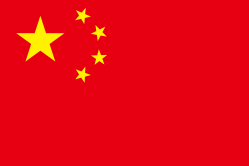1、 Redefine packaging procurement: not just about "buying materials", but also strategic investment
Packaging procurement (also known as packaging supply chain management) 🌟) It is the core process of transforming brand creativity into physical products. It covers the complete process from requirement disassembly (such as determining the weight of folding paper boxes and the sealing standards of glass bottles) to supplier full chain management, which not only directly affects the product cost structure, but also determines the quality and compliance of the terminal presentation 🌟。
Data insight: A survey shows that 72% of consumers will repeatedly purchase the same brand due to "unique packaging design", and scientific procurement strategies can help companies reduce comprehensive costs by 15% -25% 🌟。 This is also why more and more brands are setting up dedicated procurement teams or introducing third-party solutions such as PakFactory's global supply chain network 🌟), Ensure that the packaging solution achieves the optimal balance between cost, environmental friendliness, and innovation.
2、 Five steps to build an efficient procurement chain: a practical guide from demand to implementation
1. Requirement decomposition: making vague ideas executable standards
-Physical properties: specify the size (such as the diameter of the bottle body suitable for 120ml lotion), material (food grade cardboard vs. industrial grade corrugated paper), process (matte film covering vs. silver stamping)
-Business objective: Promotional packaging needs to consider mass production efficiency, while high-end lines focus on customized details (such as magnetic box structure)
-Implicit demand: Cross border sales must comply with environmental regulations in the target country (such as the EU PPW Packaging Directive)
Tool tip: Excel can be used to create a "Packaging Requirements Matrix Table", synchronously marking budget intervals and delivery cycles to avoid later cost changes 🌟。
2. Supplier screening: Multidimensional evaluation to build a reliable supply chain
-Traditional channels: on-site verification of sampling capabilities at industry exhibitions (such as Interpack in Germany), access to regional supplier resources through trade association directories
-Digital channels: Filter "gold label suppliers" through B2B platforms such as Alibaba International and ThomasNet, with a focus on production certification (ISO 9001) and past cases 🌟
-PakFactory advantage: Based on 10 years of industry accumulation, we have established a supplier whitelist covering over 50 countries, which can quickly match customized needs (such as environmentally friendly paper products with FSC certification) 🌟)
3. Scheme comparison: evaluation of implicit value beyond price
|Evaluation dimension | Basic cardboard box | Customized gift box|
|----------------|-------------------------|-------------------------|
|* * Production cost * | ★★★☆☆ (low) | ★☆☆☆☆ (high)|
|* * Brand premium * * | None |+20% -30% increase in unit price per customer|
|* * Transportation loss * * | Damage rate 5% -8% | Built in buffer structure, damage rate<1%|
|* * Environmental Compliance * * | Ordinary Kraft Paper | Degradable Material+Carbon Neutrality Certification|
Decision suggestion: Create a 'Supplier Scorecard' to quantitatively score indicators such as' sample delivery speed 'and' emergency order response capability ', avoiding a single price orientation 🌟。
4. From sampling to mass production: controlling details determines the final quality
-Prototype verification: The supplier is required to provide 3D renderings and physical samples, with a focus on testing the ease of opening (such as child safety locks) and the stability of storage stacking
-Contract risk control: Clearly define the "penalty for overdue delivery" and "return and exchange terms for defective products", and agree on a mechanism for sharing exchange rate fluctuations in cross-border procurement
-PakFactory Service: Provides a "dual track" quality inspection system - pre production AI scanning of material density, post production manual sampling of 5% batches to ensure zero defects before leaving the factory 🌟
5. Continuous optimization: making procurement a dynamic and evolving process
-Periodic review: Analyze the 'Packaging Cost Proportion Report' quarterly and compare it with industry benchmark values (usually 3% -5% of sales)
-Trend tracking: Focus on sustainable packaging trends (such as the global biodegradable packaging market expected to reach $44 billion by 2025) 🌟), Advance layout of plant based material procurement
-Data precipitation: Establish supplier KPI files to provide decision-making basis for subsequent projects
3、 Three major strategic upgrades: from cost center to value creation engine
1. Procurement pool integration: Small orders leverage big bargaining power
Small and medium-sized brands can form a "procurement alliance" with non competitive enterprises: for example, three independent beauty brands can jointly place orders with the same glass bottle factory, and by merging their procurement quantities (from 5000 units/household to 15000 units/batch), they can strive for a price discount of 10% -15%, while sharing the cost of mold development 🌟。
2. Strategic supplier cooperation: Beyond transactional symbiotic relationships
Sign a 3-5 year framework agreement with top suppliers in exchange for exclusive rights:
-Priority scheduling: Production of orders in peak season to ensure supply at promotional nodes
-Joint Innovation: Jointly develop patented packaging technology (such as smart labels that can monitor shelf life)
-PakFactory case: A mother and baby brand collaborates with us to establish an "Environmental Protection Packaging Laboratory", which reduces packaging carbon footprint by 42% within 3 years and simultaneously achieves ESG rating improvement 🌟
3. Whole life cycle cost management: clear implicit cost accounts
-Explicit cost: materials+processing+transportation+warehousing
-Hidden costs: compensation for damages, loss of work due to design changes, fines for environmental violations
-Optimization formula: When selecting suppliers, calculate the "comprehensive cost index" as follows: (purchase unit price x 1.2)+(delivery delay risk factor x 0.5)+(environmental compliance factor x 0.3). The lower the value, the more cost-effective it is 🌟
4、 When Procurement Meets Digitization: The Future Supply Chain Revolution
-AI product selection system: Input product parameters (weight, storage conditions), automatically match the optimal packaging solution (such as recommending EPP insulated boxes for cold chain products)
-Blockchain traceability: Through distributed ledger technology, consumers can scan the code to view the source of cutting/mining of packaging materials (such as the forest number of FSC certified wood) 🌟)
-PakFactory Intelligent Platform: Real time tracking of production capacity data from over 200 global suppliers, automatic warning of raw material price increase risks, helping customers lock in low prices 60 days in advance 🌟
Optimization Key Points Explanation:
1. Scenario based implantation: Increase consumers' unboxing experience, cross-border compliance and other concrete scenarios, and lower the threshold for understanding
2. Data anchoring: embedding industry report data and cost formulas to enhance professional credibility
3. Brand penetration: Position PakFactory as a "supply chain solution expert", highlighting its technological advantages (AI quality inspection, blockchain traceability)
4. SEO optimization: Natural repetition of keywords such as "packaging procurement," "supply chain management," and "sustainable packaging" to enhance search engine visibility
5. Action guidance: Strengthen the visual weight of CTA buttons and clarify the conversion path (consultation/diagnosis/solution acquisition)
 English
English



